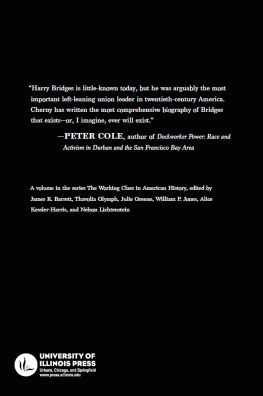PREFACE
This booklet is an attempt at popularization. The first four chapters are practically identical with as many lectures, delivered in 1917 as the January course offered by the Department of Anthropology of the American Museum of Natural History. The purpose of the January series, which was instituted in 1914 by Dr. P. E. Goddard and the writer, is to acquaint an audience of intelligent laymen with some of the results of modern ethnological work, the emphasis being on principles and problems, rather than on purely descriptive detail. The course, in short, occupies an intermediate position between technical discourses addressed to scientists and the more popular lectures which are designed to furnish mainly entertainment. Each year different topics have been chosen and several members of the staff have cooperated. Owing to the dearth of recent ethnological literature reflecting the position of American field-workers, and at the same time accessible to the interested outsider, I was easily persuaded to issue the 1917 lectures in the present form.
The last chapter may not seem to fit within the scope of this publication. It is obviously more technical than the rest in treatment and may appear to deal with too special a topic. My object, however, was to conclude with a concrete illustration of ethnological method, and I naturally selected a subject to which I had paid considerable attention during the last two years. It is a subject in which Morgan was able to arouse the interest of hundreds of laymen; and I can see no reason why an up-to-date exposition of the problems involved should not be able to hold their attention.
Robert H. Lowie
May, 1917
I. CULTURE AND PSYCHOLOGY
With the beginning of the European war the word culture acquired a sense in popular English usage which had long prevailed in ethnological literature. Culture is, indeed, the sole and exclusive subject-matter of ethnology, as consciousness is the subject-matter of psychology, life of biology, electricity of a branch of physics. Culture shares with these other fundamental concepts the peculiarity that it can be properly understood only by an enlarged familiarity with the facts it summarizes. There is no royal shortcut to a comprehension of culture as a whole by definition any more than to a comprehension of consciousness; but as every analysis and explanation of particular conscious states adds to our knowledge of what consciousness is, so every explanation of particular cultural phenomena adds to our insight into the nature of culture. We must, however, start with some proximate notion of what we are to discuss, and for this purpose Tylors definition in the opening sentence of his Primitive Culture will do as well as any: Culture ... is that complex whole which includes knowledge, belief, art, morals, law, custom, and any other capabilities and habits acquired by man as a member of society.
For purely practical reasons, connected with the minute division of labor that has become imperative with modern specialization, ethnology has in practice concerned itself with the cruder cultures of peoples without a knowledge of writing. But this division is an illogical and artificial one. As the biologist can study life as manifested in the human organism as well as in the amoeba, so the ethnologist might examine and describe the usages of modern America as well as those of the Hopi Indians. In these lectures I shall therefore not hesitate to draw upon illustrations from the higher civilizations where these seem most appropriate.
Indeed, it may be best for pedagogical reasons to commence with an enumeration of instances of cultural activity in our own midst. And since there is a persistent tendency to associate with culture the more impressive phenomena of art, science, and technology, it is well to insist at the outset that these loftier phases are by no means necessary to the concept of culture. The fact that your boy plays button, button, who has the button? is just as much an element of our culture as the fact that a room is lighted by electricity. So is the baseball enthusiasm of our grown-up population, so are moving picture shows, ths dansants, Thanksgiving Day masquerades, bar-rooms, Ziegfeld Midnight Follies, evening schools, the Hearst papers, woman suffrage clubs, the single-tax movement, Riker drug stores, touring-sedans, and Tammany Hall.
These, then, represent the type of phenomena comprised under the caption of culture. They exist, and science, as a complete view of reality, cannot ignore them. But a question ominous for the worker who derives his bread and butter from ethnological investigation arises. All the phenomena mentioned and the rest of the same order relate to man, and they relate to man not as an animal but as an organism endowed with a higher mentality. Tylors definition expressly speaks of capabilities and habits. But there is a science that deals with capabilities and habits, to wit, psychology. Is it, then, necessary to have a distinct branch of knowledge, or can we not simply merge the cultural phenomena in those of the older science of psychology? It is this question that concerns us here. On the answer must depend our conception of culture and our attitude towards a science purporting to deal with cultural phenomena as something distinct from other data of reality.
In seeking light on this subject we must understand what sort of problems arise from the contemplation of cultural facts and attempt to connect them with the established principles of psychology. A few concrete examples will illustrate the situation.
One of the striking characteristics of our civilization, a trait of our material culture that is nevertheless an invaluable, nay indispensable, means for the propagation of knowledge under modern conditions, is the existence of paper, that is, of a cheap, readily manufactured material for writing and printing. The obvious problem that develops from this fact is, How did we get the art of paper-manufacture? Now we shall search in vain our psychological literature in quest of an explanation. Hffding and James, Wundt and Titchener have no answer to offer. An answer, nevertheless, exists. Europe learnt the art of paper-making from the Arabs, who as early as 795 A. D. had established a paper factory in Bagdad. These in turn got their knowledge from the Chinese, who must be regarded as the originators of the technique. The answer is a perfectly satisfactory one, but it is obviously not couched in psychological terms: its nature is purely historical.
Nevertheless, an objection may plausibly be raised here. Though an explanation has certainly been given, it does not account for all aspects of the phenomena we are considering. There is a psychological basis for each and every one of the events in our historical series. This series we may subdivide into three stagesthe invention by the Chinese, the borrowing of this invention by the Arabs, and its transmission from Arab to European. Now the two last-named processes of transmission may not suggest the necessity of a special explanation at all. One may think that all that was required was for the Europeans to watch the Arabs and for the Arabs to watch the Chinese, and presto! the thing was done. This indeed, seems to be the view of an influential school of modern ethnologists. But the case is far from being so simple. We know of many instances, in the higher no less than in the lower cultures, corresponding to what the biologist calls symbiosisa condition where distinct communities or countries persist in a division of labor for mutual benefit, each trading some of its intellectual or material products for equivalents secured from the other. In many parts of Africa there are fixed markets in which negroes from fairly remote localities congregate for the barter of wares, which are thus diffused far from their source of origin; but it is the finished products, not the arts, that are diffused. In New Guinea trading-vessels carry such objects as pottery hundreds of miles from the area of manufacture to natives who remain as ignorant of the ceramic technique as before. In northern Arizona the Hopi Indians occupying three eminences not more than eight miles distant from one another have no perfect uniformity of industrial knowledge. Pottery, which flourishes on the eastern Mesa, is wholly unknown as an art, though constantly used in its specimens, by the people of the central Mesa; a certain type of basketry plaque is made only at Oraibi village; another type is manufactured exclusively on the central Mesa. Conditions more ideal








